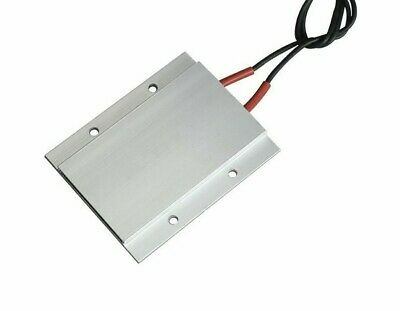Evolution is the nature of this world. Nothing is permanent, same with the technology, as the new technology invested in the previous one will be replaced. The same happens with heaters, previously worked and coiled heaters are present, but now PTC heater is replacing them. PTC is based on new technology and is much more efficient than traditional.
The Positive Temperature Coefficient heater is abbreviated as the PTC heater. These heaters are highly efficient and effective than the traditional ones. There is no requirement of controlling these heaters; they can regulate themselves and don’t require any external control. The working mechanism of Positive Temperature Coefficient (PTC) heaters is different from the traditional heater.
Functioning of Ptc Heater
They use conductive ink that is capable of passing out electricity from them. This ink is printed on polymer-based substrates. This ink will heat up automatically when it comes in contact with electricity. This PTC heater is faster, safer, and can continuously give uniform heating. And more importantly, this doesn’t get red hot like the traditional heater is.
It has an automated sensor that regulates the on and off of the heater according to the need and requirement. This will avoid the overheating of the heater as there is no control of the external circuit. It can deliver the best performance in the meantime and saves a lot of energy.
Advantages Of PTC Heater
Positive Temperature Coefficient (PTC) heaters hold a lot of benefits and advantages. Here are some of them:
- It has waterproof technology, which makes it used in places with water risks like in bathrooms and kitchens.
- It does get heat on the handles, making it portable to any place, even if turned on. Its features and specifications make it an ideal electric mobile heater.
- It doesn’t release any electromagnetic radiation harmful to your skin and organs. The main advantage of this heater is its eco-friendliness. It also doesn’t produce any pollution or electrical burns other than radiation.
- There is no wastage of water. This is based on the new technology, so the 100% conversion of electric energy into heat energy occurs.
- It has a long life. According to the researchers and analyzers, it can see for up to 30,000 hours without any service and maintenance.
- It doesn’t get red hot, which preempts all kinds of burns and the risk of wire melting. Even if the electricity voltage accidentally increases, the modern mechanism of the Positive Temperature Coefficient (PTC) heaters will shut the heater automatically.
Is It Worth Buying?
Yes, Positive Temperature Coefficient (PTC) heaters provide many features and benefits that make them worth buying. It consumes less power and gives better and healthy output, and saves you from numerous risks. They recognized the unique properties of PTC heaters, making them more reliable, safer, and more cost-effective than traditional resistance wire heaters. PTC air heaters are designed with finned resistive heating elements to ensure balanced heat transfer at low airflow.
These produced ceramic stones have unique properties as semiconductors, the properties of which can be determined during their design and manufacture. Positive Temperature Coefficient (PTC) heaters devices do not burn oxygen and are safer to use in a controlled environment. This also makes them more energy efficient.
Read Also: What Do You Need To Know About PTC Heater
Takeaway Points
In the growing world, the pollution and consumption of electricity continuously increase, which harms the environment. There is a requirement for such revolutionary products and replacements as Positive Temperature Coefficient (PTC) heaters. These small things will contribute a lot to an eco-friendly world. Other than the environment, it also saves your money, increases safety, and provides continuous heat during winters.

